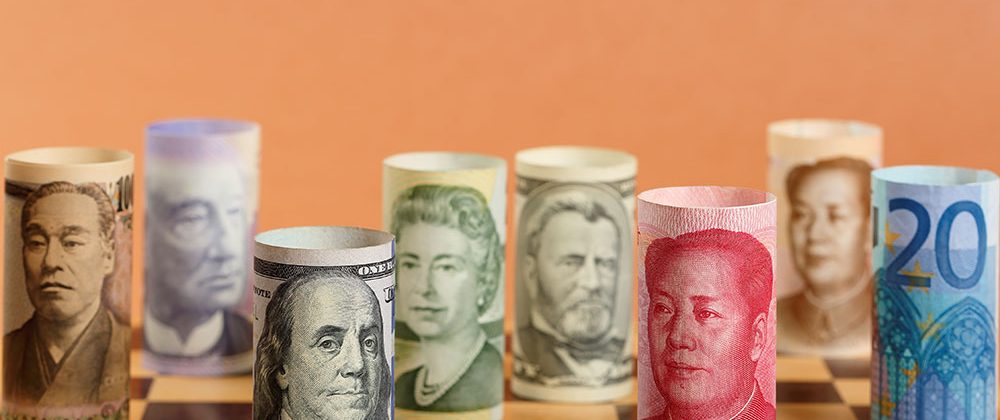Currency Pairs

Currency or Foreign Exchange trading as it’s otherwise known is a process in which an investor takes a view on one currency at the expense of another, with the expectation that the value of Currency A will fluctuate relative to the value of Currency B.
Currency Pairs can be thought of as the description for and expression of the relative values between two stated currencies. For example when we talk about the price of Dollar Yen we are referring to the rate of exchange between the US currency the Dollar and the Japanese currency the Yen. More specifically we are referencing the number of Yen its takes to buy one US Dollar, which at the current moment in time is around 118.00
Foreign exchange trading has been part of the world’s financial landscape ever since the first usable transatlantic telegraph cables were successfully laid in the late 1860s. This meant that rudimentary prices could be transmitted between London and New York in near real time. Ultimately facilitating international trade. Indeed the exchange rate between the Pound Sterling and the US Dollar is known, even today, as the Cable rate.
Abbreviations and Syntax
Over the lifetime of the Foreign Exchange market the standard format for expressing and annotating Currency Pairs has evolved and grown into the ISO 4217 notation. An alphanumeric code that uniquely identifies each individual currency. These individual codes are then combined to create an identifier for a given Currency Pair. The table below shows some examples of these identifiers.
The two components of a currency pair are known as the base currency and the quote currency. The base currency is the first currency in the annotation. Whilst the quote currency is the second named currency. Or if you prefer the reference amount or rate.
Such that when we quote USD JPY (the US Dollar vs the Japanese Yen ) we are referencing the amount of Yen, the quote currency, required to purchase US Dollars,the base currency.
Mechanics of a Currency Pairs trade
As the name suggests when we trade Currency or Forex Pairs we are trading in two instruments. Or if you prefer the relative value between those instruments. So for example if we buy USD CHF (or Dollar Swiss as it’s commonly known). We are backing the US Dollar to strengthen and the Swiss Franc to weaken. That is we are anticipating that the number of Swiss Francs required to purchase a US Dollar will rise.
Conversely if we sell USD CHF (Dollar Swiss) we are backing the Swiss Franc to strengthen and the Dollar to weaken. Or put another way, we are expecting the number of Swiss Francs required to buy a US Dollar to fall. Whenever we trade Currency Pairs (or crosses) we are always taking two views or positions. One on each of the individual components of the quote.
Price quotes
When we look at the price for a Currency Pair we will usually see two prices the Bid and the Ask (or Offer price). The Bid price is the level at which we can sell the base currency and buy the quote currency. Whilst the Offer or Ask price is the price at which we can buy the base currency and sell the quote currency.
See the table below for examples of these quotations.
Currency Pairs and Crosses
Classically Currency Pairs were thought of as those Foreign Exchange rates which included the US Dollar as one of the components of the quote. Any other rates, for example the price of AUD CAD (the Australian Dollar vs Canadian Dollar) were thought of as a Cross Rate. The price of which could be derived from the respective rates, of the two cross currencies, against the US Dollar.
For example
AUD USD * USD CAD = AUD CAD
However with the emergence of the Euro as a full blown currency in 1999 that distinction was diluted and many market participants now think of rates that include the Euro as being Currency Pairs, rather than crosses. In practical terms however this distinction makes little if any real difference.
Majors and Exotics
Currency pairs and crosses can be further classified into Majors and Exotics.
The majors are the world’s principal currencies, those of its leading economies and their pairs and crosses. Whilst the exotics are the currencies of smaller often emerging economies and their respectives pairs and crosses.
Most of the business in Foreign Exchange markets is concentrated among the majors. Transactions involving the Euro, the Yen and the Pound Sterling accounting for more two thirds of all daily business. Whilst the US dollar is involved in as much as 87% of all Forex transactions,according to Bank for International Settlements or BIS data .
Price Movements
The price of a Currency Pair is influenced by a wide variety of factors, most obvious of which are the relative strength or otherwise of the two underlying economies and any differential in interest rates between the two banking systems.
In the modern online marketplace investor expectations, sentiment and risk appetite (or the lack of it) can be at least as, if not more, influential on the price of Currency Pair. These forces combine to create what we can think of as the flow of supply and demand.
When demand for a currency pair outweighs the supply, then the price will rise. Whilst when there is an excess of supply over demand, then the price will fall. The level of supply and demand for a currency can and does fluctuate moment to moment.
Nature and Size of the Currency Markets
The Foreign Exchange market is decentralised, that is to say there is no dealing floor or central exchange on which its business is conducted. Rather the market is what is known as an Over The Counter, or OTC market. Whose participants are spread across the globe.
Most trading in Currency Pairs is conducted electronically,between remote counter-parties. Who range in size from private clients up to large hedge funds and central banks.
The daily turnover in the Global Foreign Exchange market can reach up to $5 trillion dollars per day (according to BIS Data ), far larger than the turnover of any other financial markets.
Forex trading takes place 24 hours per day, Five days per week (from 22.00 GMT Sunday night to the close at 22.00 GMT in New York, on the following Friday).
Business is effectively conducted in three distinct sessions which are Asia, London (Europe) and the US. The business day starts in Asia and as their day moves into the afternoon, trading transfers to the City of London and then ultimately onto New York, as the European business day comes to close. Once the US trading day is over, the baton is once again handed back to Asian business centres,such as Tokyo and Hong Kong, and the whole process starts once more.
To become familiar with Currency Pairs, the way they quoted, how they interact with each other and the influence that economic data and news has on them. Why not sign up for one of our live trading accounts and download our dealing platform .






